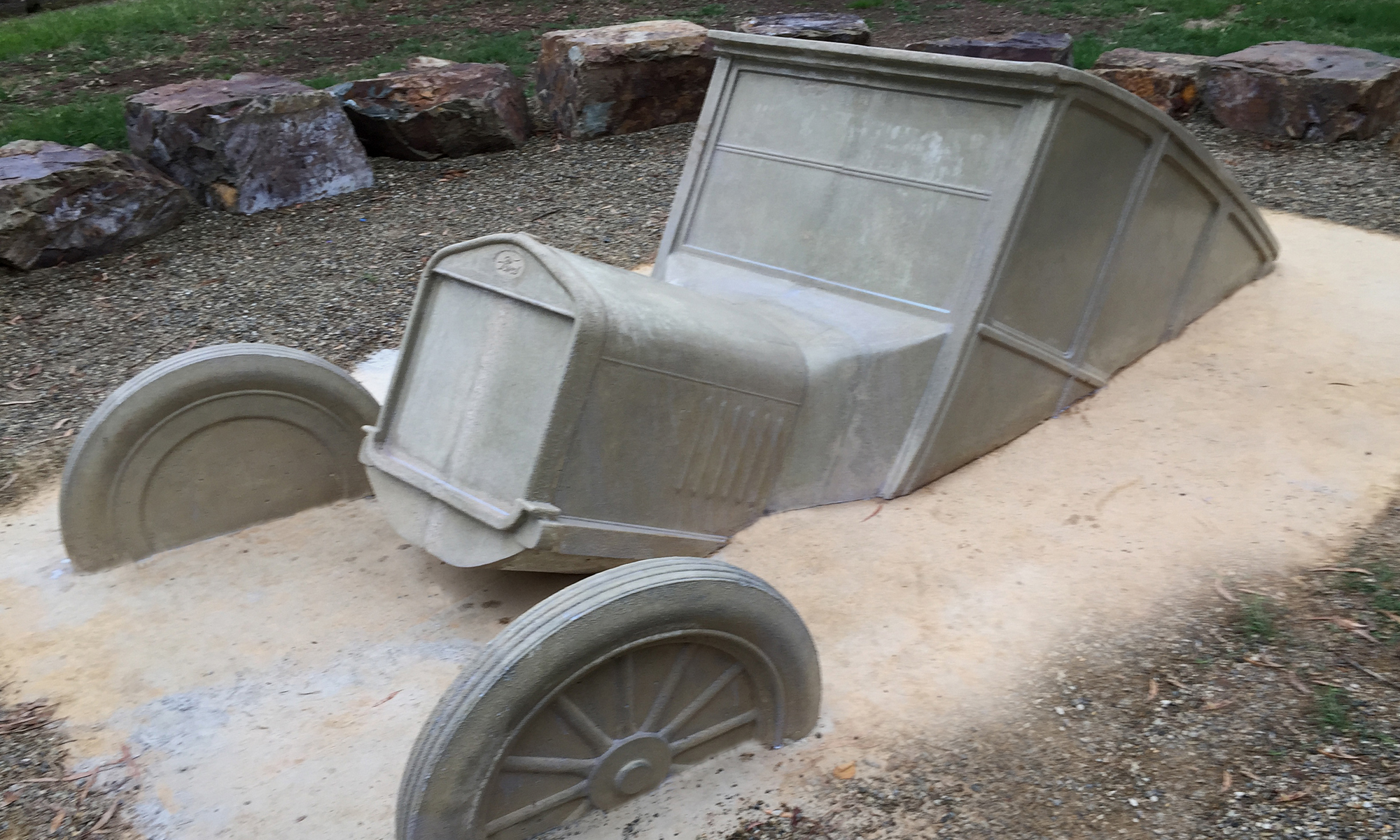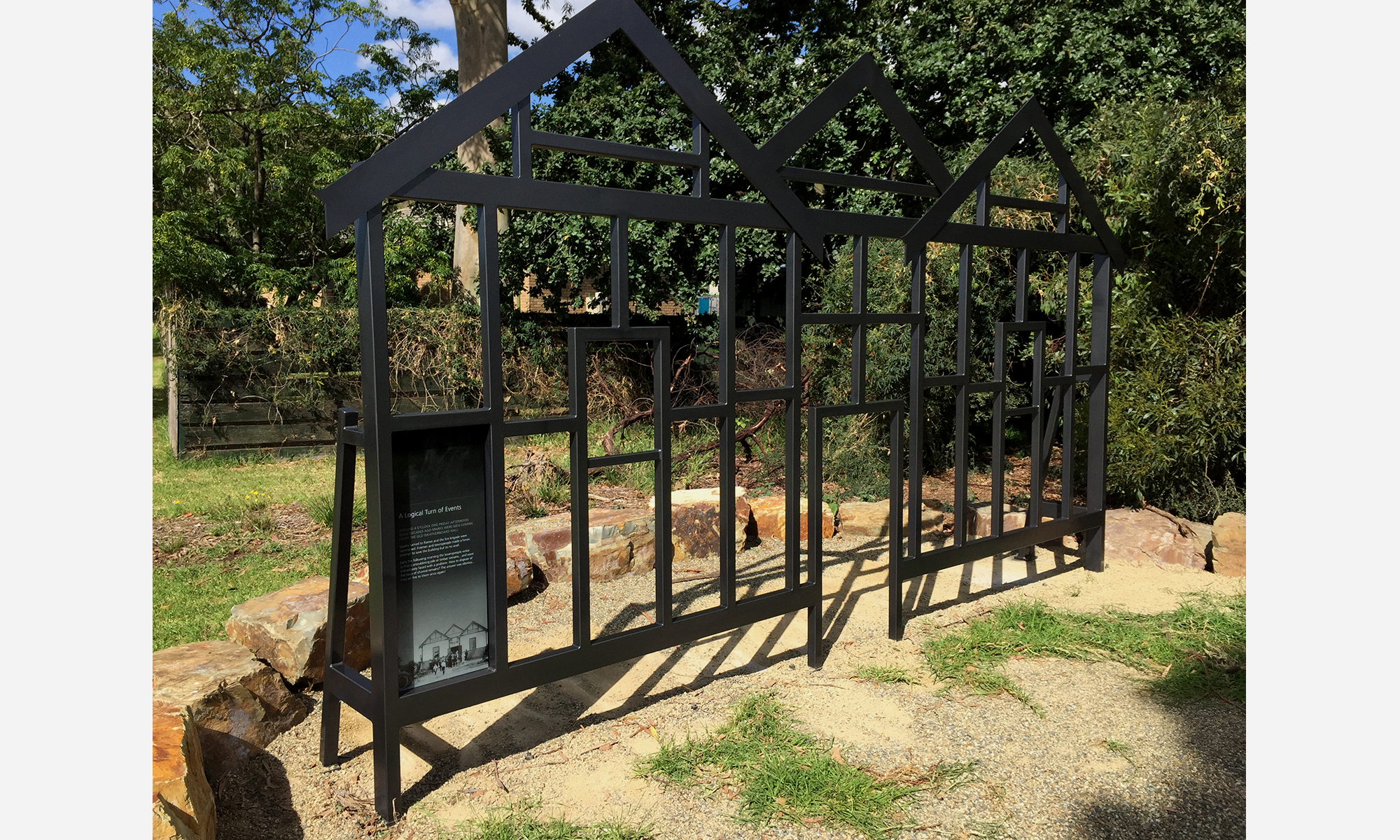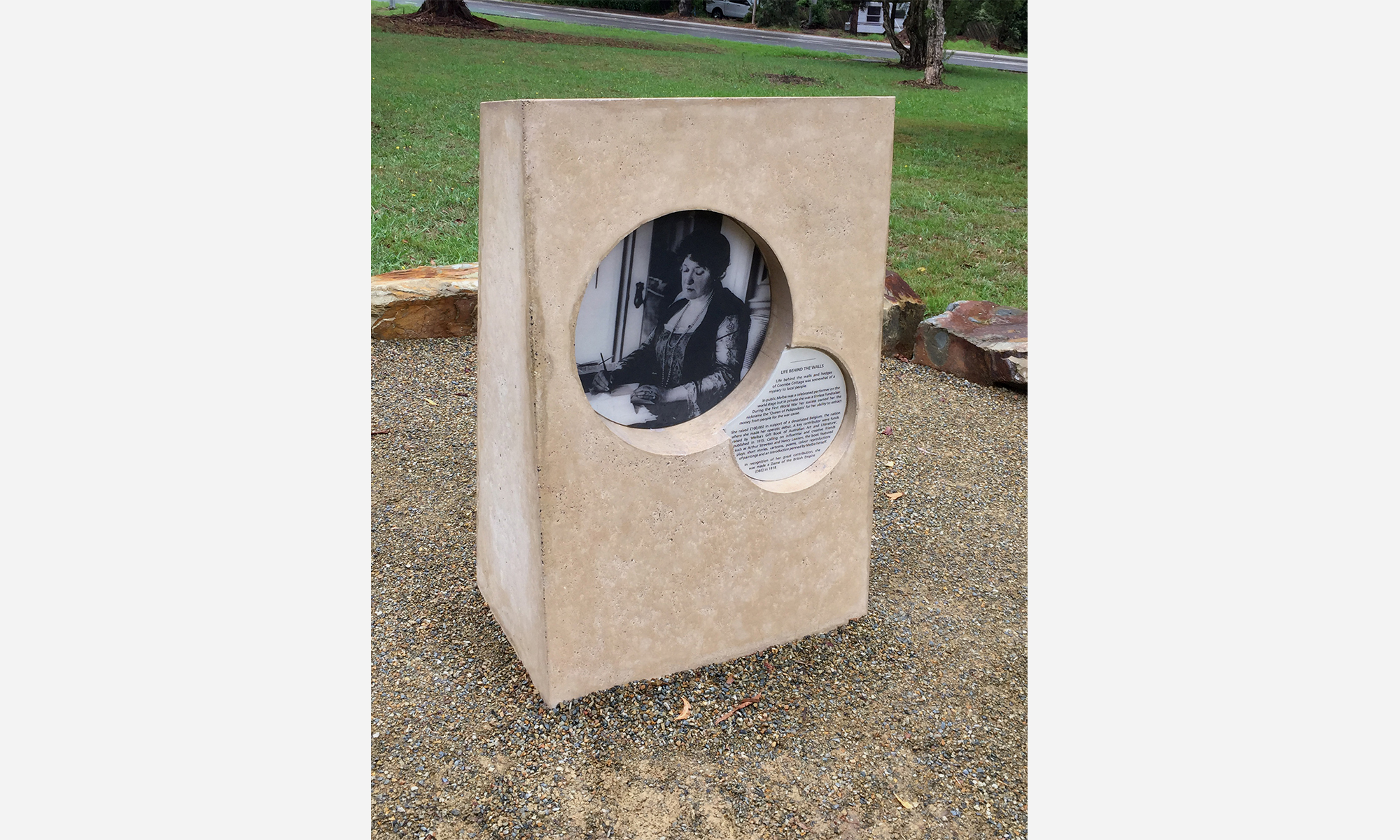Coldstream Cultural Walk, Coldstream, Victoria
Project Commenced: May 2018
Project Completed: Due for completion late 2020
Thylacine’s role
- concept design
- design management
- content research
- 3D and graphic design
- fabrication
- installation
A Permanent Interpretive Art Trail
The Coldstream Cultural Walk is a permanent interpretive trail linking six sites across the township of Coldstream in Victoria. The project was an initiative of Yarra Ranges Council and Simon Ellis Landscape Architects, to explore and celebrate aspects of Coldstream and its history as recounted in the stories of local residents.
Video and audio recordings from a previous Coldstream oral history project provided the background material from which the project grew. Key goals of the project were to reinforce a sense of community identity and to provide a unique experience for visitors.
In the first phase of the project Simon identified the stories to be featured and developed a site map for their placement. Thylacine was then invited to develop and refine a concept for five of the six sites, develop a detailed budget for each and manage the eventual fabrication and installation. A sixth site was developed separately by Victorian artist James Voller
Beginning at the southern end of Coldstream and finishing at the entrance to Dame Nellie Melba’s home, ‘Coombe Cottage’, each site features a sculptural marker based on the events and people of the town. The stories, drawn from the oral history recordings, are droll, playful and perhaps a little eccentric, revealing something of the unique texture of life in a small country town.
Some examples are:
“The Hall That Burned Down…Twice” relates the story of the fire that destroyed the Melba Library in the 1960s. After making a huge effort to put the fire out, ironically the townspeople set fire to it again the next day as a way of removing the wreckage. In another, “‘The Model T Myth (for Les Skate)” a life size concrete Model T emerges from the ground, commemorating the (true) local story of a Model T Ford that ended its life and remains buried somewhere beneath the local football oval.
The final marker is nearing completion at the moment. Based on the ubiquitous roadside ‘rest area’ sign, “Rest Area (with ghost table)” arose from the tale of a local resident who took the council to task over the fact that while the sign shows a tree and a picnic table there was actually no table at the site. Rather than the expected installation of a table the council simply removed the table from the sign.




